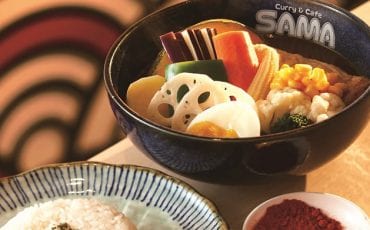Articles
Seasons
Oct 1, 2013
Seasons Feasting
outed as a culinary paradise all year round, Japan’s finest seasonal offerings promise to tantalise. Think of Japanese fare and sushi immediately comes to mind. While the renowned dish has become synonymous with the land of the rising sun, there is much more to Japanese culinary culture.
With a food culture led by the changing of seasons, the Japanese naturally place high value on wholesome flavour and freshness. They only eat ingredients that are Shun (in season), which explains the well-developed and refined flavours of their culinary creations. That said, their reasons for seasonal eating also extend beyond a matter of taste. Because the Japanese firmly believe in harmonious living, seasonal eating also deepens their awareness about the progression of nature’s cycles.
Spring Delight
The vibrant season signals the blooming of Japan’s famous Sakura (cherry blossoms). Its fleeting beauty only lasts a few days, hence it is common for friends and family to gather for Hanami (flower viewing) parties. Hanami Bento, which is available in restaurants for a limited time, is usually brought to these parties. The Bento set contains seasonal grilled fish, simmered spring vegetables, and rice scattered with vegetables cut into shapes of Sakura petals. Often, Sakuramochi (rice dumplings wrapped with a salted Sakura leaf) and Kamaboko (fish cakes) with pink designs are used to add colour to the bento.
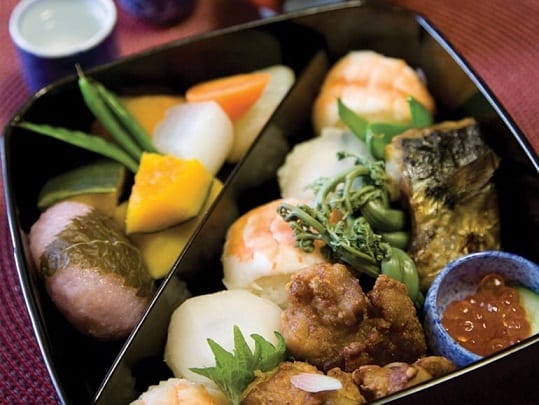
Spring also ushers in Hinamatsuri (Doll’s Festival) on March 3. Food involved, such as Hishimochi (diamond-shaped rice cakes) and Hina Arare (crunchy puffed rice balls), feature three main colours – pink, white and green. White Sake is also served, representing happiness and good fortune.
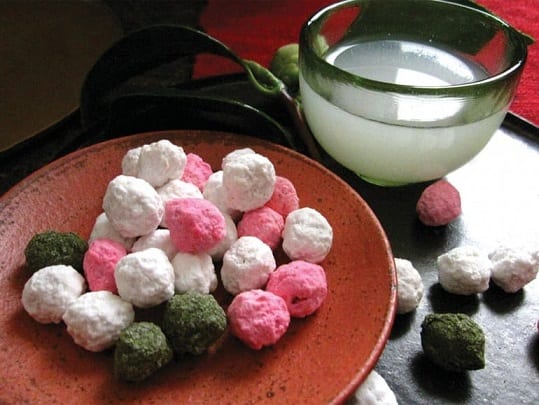
A Slice of Summer
While it seems colourful foods illustrate Spring’s identity, the subsequent summer heat calls for a more cooling variety. For example, dishes with tofu and soya are favoured. Hiya-yakko (chilled tofu) is a dish with seasonal herbs such as Shiso and Myoga, and it showcases the subtle flavours of a Japanese staple.
During summer, Japan’s skies become dotted with firework displays, symbolising the nation’s rising temperatures. That’s why cold Somen is also a well-liked summer dish, in particular Nagashi Somen. This Japanese eating style sees the thin and silky Somen noodles served in a bamboo pipe full of flowing water. Even though this fun summer tradition is often seen at festivals or restaurants, families can also rig up their own backyard bamboo pipes.
Hiyashi Chuka (cold Ramen) is another cooling dish best enjoyed during summer. Akin to a Ramen salad, the chilled Ramen noodles are tossed with fresh and crisp vegetables like cucumbers, tomatoes and corn, as well as other ingredients like ham and sesame seeds.

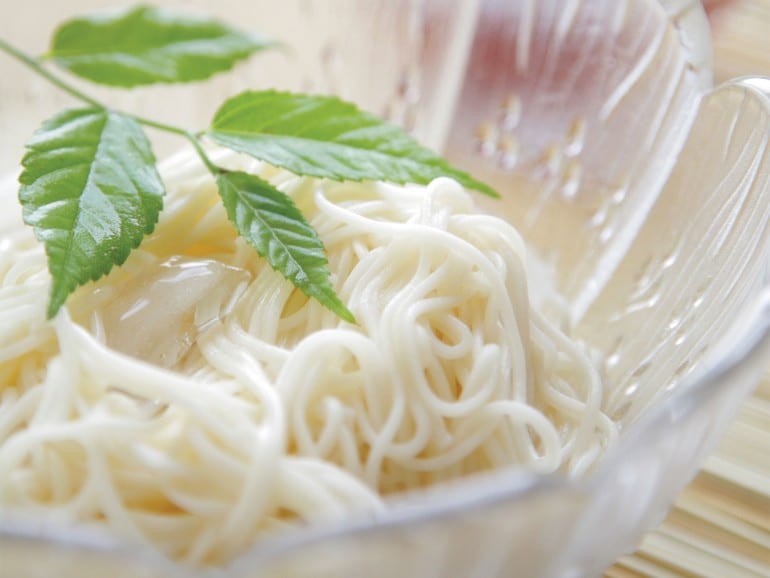
Flavours of AUTUMN
With summer’s delicate spread promising to whet one’s appetite for the following seasons, it is little surprise that autumn serves up a bigger gastronomical feast.
This being the season of harvest, chestnuts are a common ingredient enjoyed by the Japanese. The harvested nuts are often mixed with steamed glutinous rice to produce Kurigohan, though regular Japanese rice is used if glutinous rice is unavailable.
In addition, autumn is also the season that large schools of Sanma (mackerel pike) arrive off the coast of northeastern Japan after swimming down from the cold waters of the far north. Grilled Sanma is a favoured autumn dish, because the fish boasts plenty of oily body fat, making it a tasty and nutritious option.
Another autumn favourite is the Matsutake mushroom. Although very expensive, it has a unique aromatic fragrance that makes this ingredient popular among the Japanese. Grilled Matsutake mushrooms can be eaten with Sake. Matsutake mushrooms can also be enjoyed as Dobin Mushi, which is a lightly flavoured clear broth consisting of Matsutake mushrooms and vegetables. Because the dish is sophisticated and light, Dobin Mushi is the quintessential Japanese dish.
On the festival front, Japanese celebrate Tsukimi (the harvest moon festival), which honours the autumn moon and sees people eating Tsukimi Dango (rice dumplings) to celebrate the beauty of the moon.
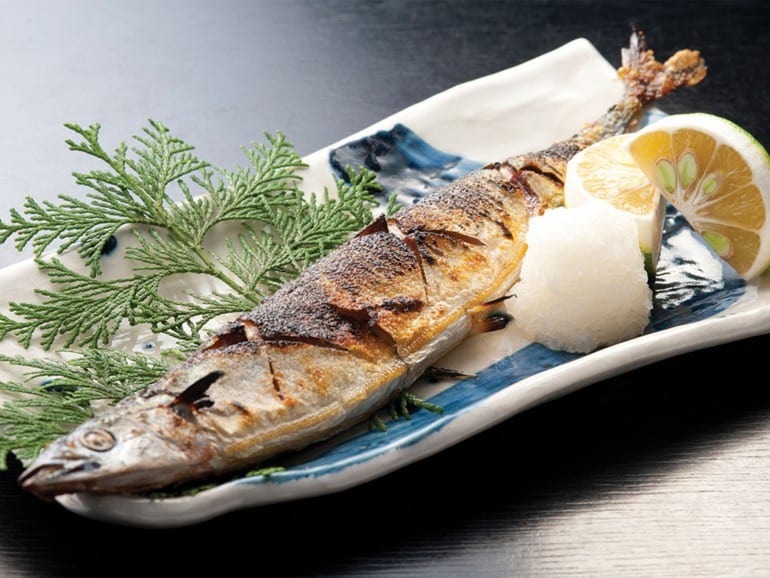
Winter’s Warmth
As temperatures dip, winter heralds some of Japan’s most beloved festivals and foods. Even though it seems like Japan has a year-long food fiesta, Shougatsu (New Year) is Japan’s most important festival. For the festival, special New Year foods, such as Osechi, are prepared in decorated stackable boxes called Jubako. Each layer of the box contains different foods, such as bamboo shoots, sweet black beans and chestnuts in sweet potato paste. Moreover, because of the cold, children are also fond of hot grilled rice cakes dipped in sweet Kinako (soy bean powder). It used to be tradition for families to get together to pound sticky rice to make it into rice cakes before eating them.
Ushering in the new year is an affair that calls for food, friends and reminiscence all in one night. In fact, a common New Year’s tradition is eating Toshikoshi Soba on 31 December before the clock strikes 12 midnight. Even though one may enjoy a bowl of hot Soba anytime, eating Toshikoshi Soba has a ritualistic element because it is a meal during which Japanese reflect on the past and make wishes for the coming year. Moreover, Bonenkai, also known as a “forget-the-year” gathering, is a drinking party for adults that allows them to reflect on and forget the trials and tribulations of the past year. Typically, these gatherings involve large consumptions of alcohol.
With myriad gastronomical delicacies for her people, it is no wonder Japan is a haven for foodies, regardless of the period they choose to visit.
From 2014, Oishii – a magazine dedicated to the many culinary and gourmet wonders of Japan – will be published four times annually, with each issue launched in time with the arrival of a new season. Are your tastebuds teased and ready to sample the many gourmet offerings from Japan? We know ours are!
Itadakimasu!







